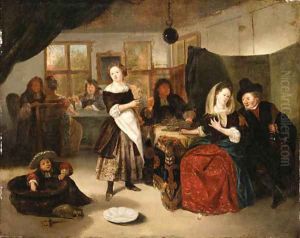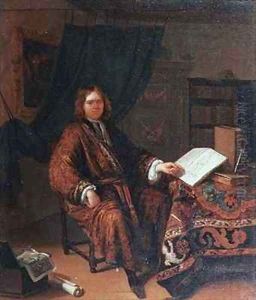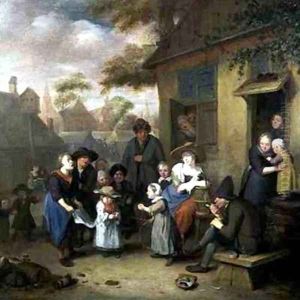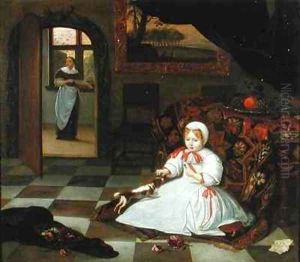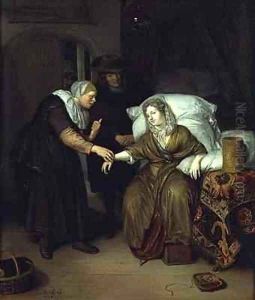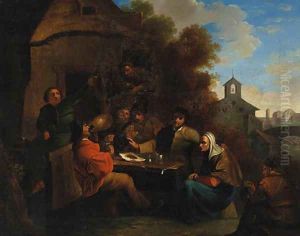Richard Brackenburgh Paintings
Richard Brackenburgh, also known as Richard Brakenburg or Brakenburgh, was a Dutch Golden Age painter born in 1620 in Haarlem, Netherlands. He was a versatile artist known for his genre scenes, portraits, and historical paintings. His style was heavily influenced by the Haarlem school of painting, which was characterized by a focus on everyday scenes, often with a moralizing or humorous undertone.
Brackenburgh was a student of Hendrick Mommers, a lesser-known Dutch painter who also specialized in genre scenes. He was also influenced by the works of Adriaen van Ostade, another Haarlem painter known for his lively and detailed depictions of peasant life. Through these influences, Brackenburgh developed a taste for painting scenes of entertainment, celebrations, and domestic life, capturing the spirit and customs of the Dutch middle class.
Throughout his career, Brackenburgh remained active in the Haarlem Guild of St. Luke, which was the city's painters' guild. His membership in the guild allowed him to sell his works and take on students. Despite his local success, Brackenburgh did not gain the same level of international fame as some of his contemporaries.
Brackenburgh's work is characterized by its fine detail, vibrant colors, and the use of light and shadow to add depth and realism to his compositions. His paintings often included groups of people engaged in conversation, playing music, or enjoying games, reflecting the convivial atmosphere of 17th-century Dutch taverns and homes.
Richard Brackenburgh's paintings are part of collections in various museums, showcasing the domestic life and culture of the Dutch Golden Age. He passed away in 1702 in Haarlem, leaving behind a body of work that provides a window into the social fabric of his time.
